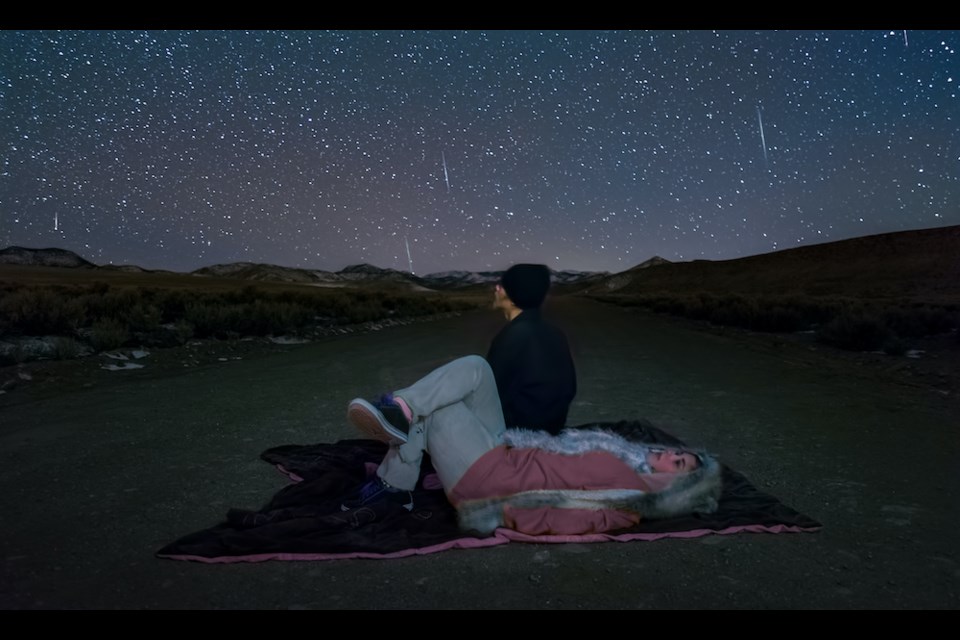Stargazers can feast their eyes on two rounds of shooting stars during the year's most spooktacular month.
Two meteor showers are viewable from the Lower Mainland in October. The first, the Draconid meteor shower, will peak around Oct. 7 to 8. However, the second one, the Orionids meteor shower, puts on a more impressive display.
While both showers are visible to the naked eye, sky-watchers should head to places with less light pollution, such as the countryside or popular spots like . The location is ideal for stargazing but the day-use area closes at 11 p.m. and access to the campground is for strictly for viewing. Folks looking to use the area for viewing must on the website.
The Draconid meteor shower
The Draconid meteor shower, also known as the Giacobinids, is more productive in the evening hours than in the wee hours of the morning after midnight. This means folks looking to view shooting stars don't have to stay up to an ungodly hour to catch some of the action (other showers, such as the popular Perseids in August, are most productive between midnight and dawn).
Earthsky reports that the shower will peak in the evening of Oct. 7 and into the wee hours of Oct. 8. The aren't especially productive but sky-watchers can see up to 10 meteors per hour with ideal conditions (see slide two).
While 10 shooting stars isn't considered an impressive amount, the shower has been known to "spew forth many hundreds of meteors in a single hour" on rare occasions.
The Orionid meteor shower
The is active from Sept. 6 until Nov.11 and typically sees around 23 shooting stars hourly at its peak. The productive shower peaks sometime between Oct. 21 and Oct. 22 and is considered "one of the most beautiful showers of the year."
The shower's meteors are known for their "brightness and speed" that can leave "glowing trains" behind them as they sail across the sky. These can sometimes turn into "fireballs," which are bigger explosions of light and colour persisting longer than typical meteor streaks, according to NASA.
The American Meteorological Society notes that the shower can putting it on par with the Perseid meteor shower (one of the brightest showers of the year). On average, the Orionids produce roughly 10 to 20 shooting stars but in exceptional years they may produce up to 50 to 75 per hour.
NASA advises sky-watchers in the northern hemisphere to face southeast to view the heavenly display. The shower originates from the comet 1P/Halley and its meteors appear to fall from the constellation Orion (where the shower gets its namesake).
Tips for viewing meteor showers from the Canadian Space Agency
The Canadian Space Agency (CSA) provides the following tips for getting the most out of your meteor shower viewing experience.
- If you need to use a flashlight, place a red filter over the bulb (a red balloon will do in a bind). White light is very blinding and may affect your night vision.
- Dress warmly. October nights can be very chilly. Check the Metro Â鶹´«Ã½Ó³»weather forecast before heading out and bring extra blankets and layers.
- Sit back and relax on a reclining chair or lie down on a blanket. Not only is it much more comfortable to observe the stars lying down, but you'll also see more that way.
- Pack a thermos of hot chocolate or coffee—it will come in handy if you start to drift off or get a little chilly.
- Be patient. It might take a while before you see your first shooting star. Don't be quick to give up... It's worth the wait.
Skywatchers can also stay up-to-date with hyperlocal forecasts across 50 neighbourhoods in the Lower Mainland with V.I.A.'s Weatherhood to plan their meteor-viewing experience.



